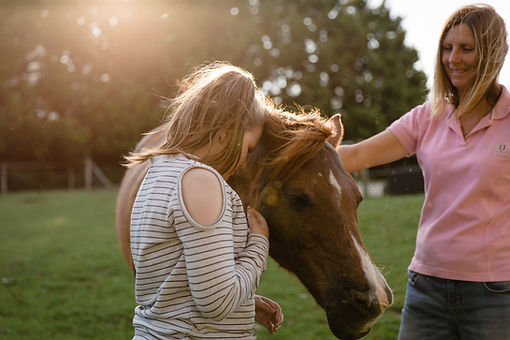
Equine Assisted Therapies
EAP sessions do not require the client to be verbal about their thoughts and feelings. EAP allows the client to try out new behaviours and get feedback from an unbiased source: the horse. The experiential aspect of EAP allows the client to address verbal and non-verbal communication as behaviours and emotions surface during the work with horses. If the client’s behaviour is not working in the relationship with the horse, it is probably not working in other relationships. The outcomes of EAP are measured by the insights developed over the course of the therapy.
Observation and activities with Horses
The focus is on the process that unfolds through the activity, and this provides opportunities for “real life” or metaphorical learning. The response of the client is a fundamental part of EAP. Through carefully planned activities, clients tend to project their thoughts, beliefs and feelings onto horses. For example: a horse may turn and walk away from a client. This action can be interpreted any number of ways by the client, and it is through this interpretation that the clinical team understand how the client perceives their world.
Actively involved in the therapy
EAP is experiential therapy, and the process of learning occurs through engaging in activities with horses and making meaning from experience. The activities promote reflection, analysis and therefore, a client is engaged intellectually, emotionally, socially and physically. Through the process, the client derives meaning to explore and examine their values. The result of the learning is personal. It forms awareness from which future learning can lead to changing attitudes and perceptions that improve well-being.
EAP is primarily Solution Focused Brief Therapy (SFBT)
SFBT is a form of psychotherapy that focuses on current problems and solutions. The goal of EAP is to not to pathologise but build on client strengths and beliefs, and using horses creates a context in which this can occur.
EAP as a Family Systems Theory Approach
Working with horses enables a Family Systems theory approach to be applied as the client becomes part of the herd, and therefore their behaviours for coping and responding to challenges become evident. It is from here that the work begins for the client.


